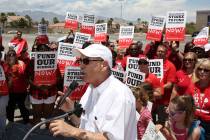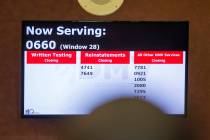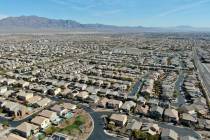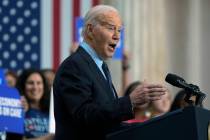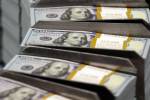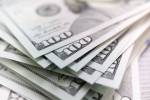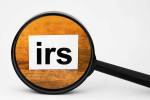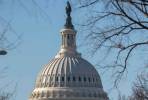EDITORIAL: Water board should OK rate increase
The assault on the public’s pocketbooks is unrelenting. Government at every level wants higher taxes, and the costs of other necessities, from energy to health care to food, keep rising as well. Taxpayers are tired of being asked to cough up more, more, more.
So how is the Southern Nevada Water Authority’s latest rate increase proposal any different from, say, the Clark County Commission’s recent fuel tax increase, the commission’s consideration of a sales tax increase to boost police funding, a forthcoming state ballot question to impose a 2 percent margins tax on businesses, or just about any other tax or fee increase that comes down the pike?
The water rate hike is needed to make debt payments on money already spent. The other tax increases would support future construction projects and increased operational expenses — spending that could be cut back at any time or avoided altogether.
In other words, valley residents can pay more toward water infrastructure debt now, or wait and pay a lot more later.
“How are you going to do this? The banks want their money,” authority General Manager Pat Mulroy told the Review-Journal’s editorial board Tuesday.
The “perfect storm” of the collapse of the valley’s growth-fueled economy and drought on the Colorado River all but wiped out the authority’s water connection revenues while necessitating big spending to guarantee the delivery of the valley’s water supply from shrinking Lake Mead. To counter the drop in connection revenue, from $188 million in 2006 to $3.2 million in 2010, the authority drained its reserves from about $700 million to today’s $280 million, the equivalent of one year’s worth of debt payments. Those payments on $3 billion in debt will rise from $132 million this year to $238 million in 2017.
Last year’s water rate increases were more dramatic, slugging businesses with huge infrastructure surcharges on their fire lines, doubling or tripling many monthly bills. That outcome, and the outrage that followed, prompted the authority’s Integrated Resource Planning Advisory Committee to recommend a gradual, less-dramatic increase in water bills over the next four years. Half the increase would be based on water use, giving customers another incentive to conserve, half would be based on a fixed monthly charge, and fire line surcharges wouldn’t change. As a result, a typical residential customer would see their monthly bill increase by about $4 by 2017. A typical restaurant might see its average monthly water bill rise $30 over four years.
The rate increase would prevent further draw-down of authority reserves, which would affect its credit rating and make future infrastructure projects more expensive. And make no mistake, more projects will be needed in the years ahead.
The authority’s board, comprised of local elected officials, will have a public hearing on the plan today and could vote on it. The board should approve the proposal. The alternative is to let the authority run through its reserves, then impose a far more Draconian rate increase three or four years from now.
Taxpayers are under no obligation to pay more to grow their governments any further. But they must pay back the debt that allows water to flow from their taps. Approve the rate increase.








